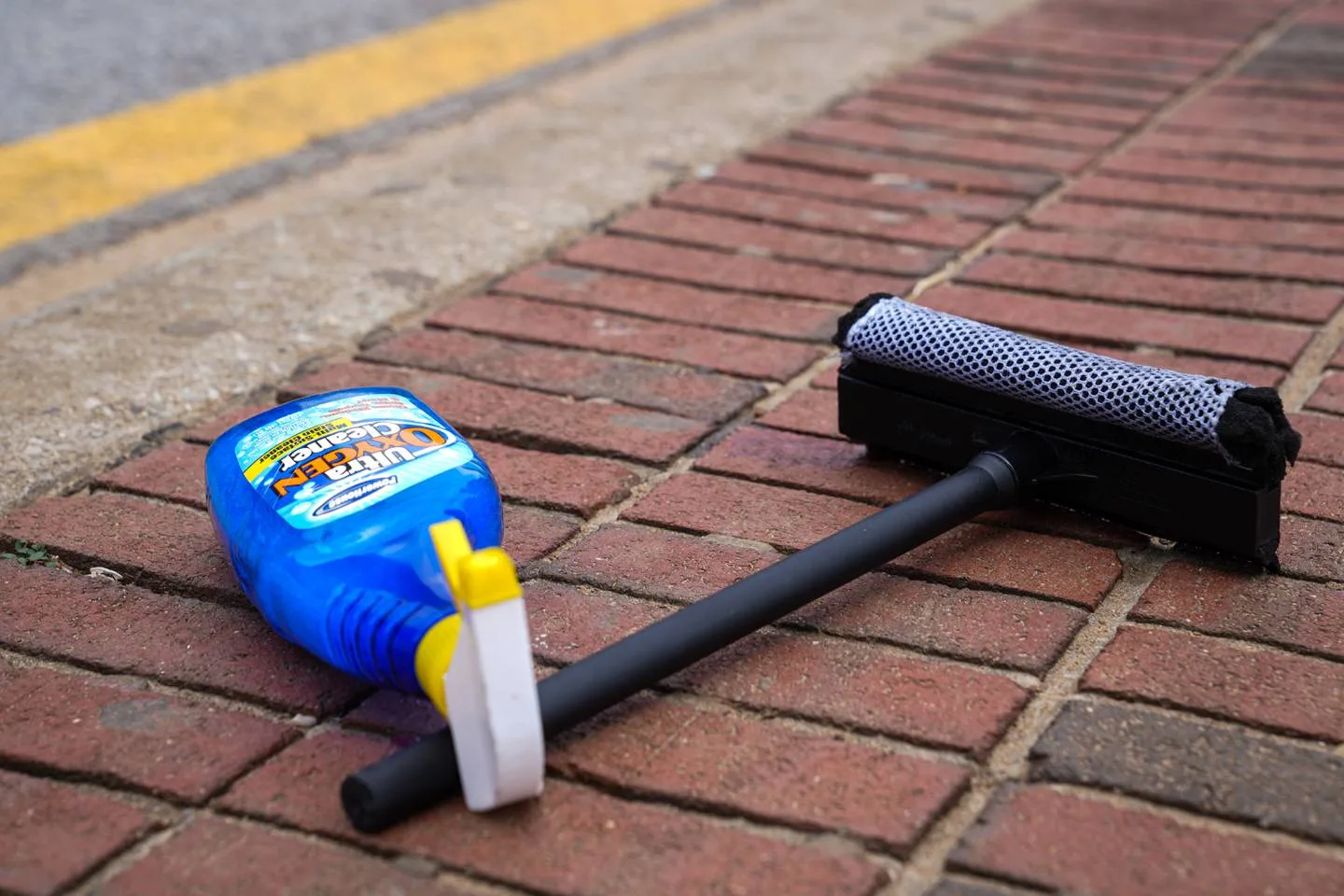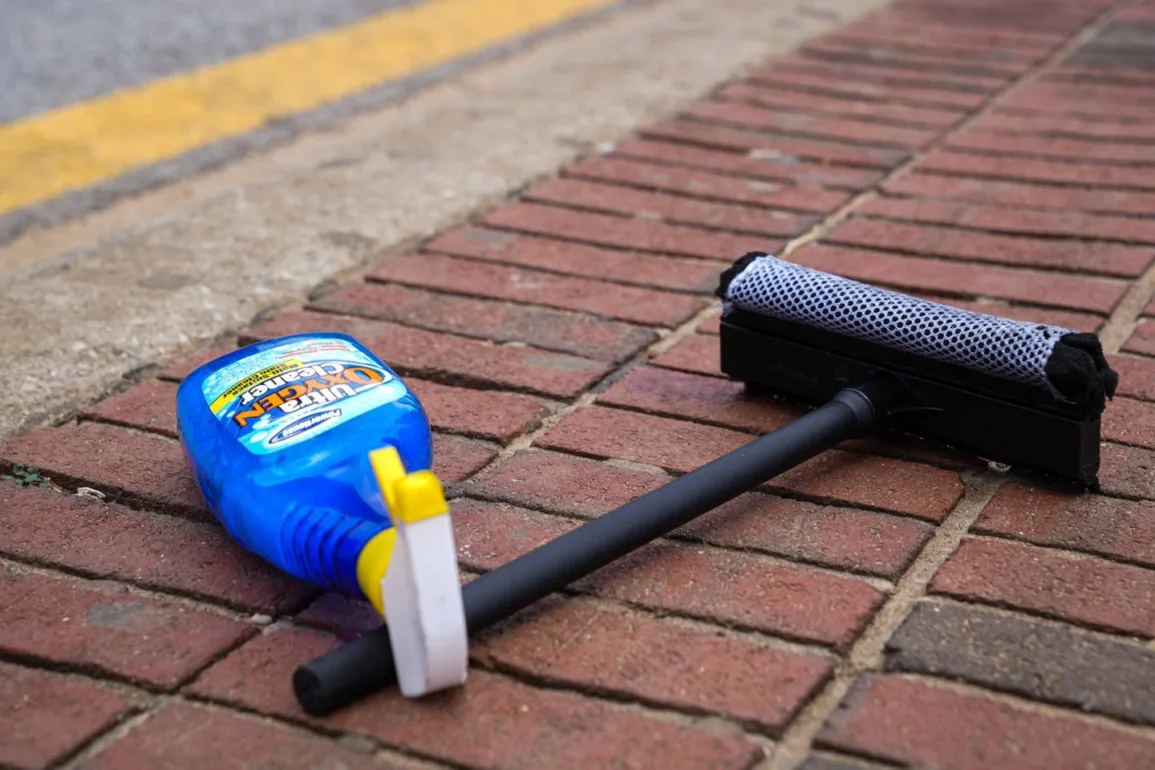Months ago, large groups of squeegee workers were a consistent presence on President Street in downtown Baltimore and in other busy intersections in the city. The workers, often Black teens and young adults, approached vehicles when the lights turned red, washing windows in hopes of a tip.
Now, those same streets are noticeably quieter. One or two young people may show up with a squeegee in hand, but they are no longer as much of a regular presence, according to observations from a Baltimore Banner reporter in June and July.
The changes follow the enforcement of a series of recommendations released in November by the Squeegee Collaborative, a group of young people, business owners, government and community leaders convened by Mayor Brandon Scott in July 2022, following a fatal shooting in which a teenage squeegee worker was charged. The 16-year-old was convicted of voluntary manslaughter last week.
The recommendations included accountability measures such as a ban on squeegeeing in six high-traffic intersections across the city, which police can enforce through warnings and citations, and outreach services such as connecting squeegee workers to jobs and schools.
Enforcement of banned zones and implementation of the action plan began on Jan. 10. In the nearly seven months since, the city has seen “some pretty significant progress,” City Administrator Faith Leach told The Banner, pointing to decreases in the number of squeegee workers seen in banned zones and the city’s efforts getting young people connected to jobs.
In an interview with WYPR earlier this month, Leach stressed the plan is about more than getting squeegee workers off busy roadways.
“This is about really getting to the core and the crux of what drives our young people to these corners. And it’s about connecting them to opportunity,” she said. “But we have seen a remarkable difference, I would say, when we compare this time last year and where we are this year with the the number of squeegee workers that are out on corners versus the number that we have been able to connect with employment.”
Speaking with The Banner, Leach said the city has documented around 200 squeegee workers over the last four years, though the number of active workers fluctuates. As of July 8, the city has helped 33 squeegee workers get jobs — most through Hire Up, a program for city residents who are unemployed. Some have been placed with city agencies, while others are working at the Downtown Partnership and at Hotel Revival, among others.
They work 35 hours per week and are paid $15 an hour, Leach said. Officials did not respond to multiple requests to interview a squeegee worker who’s been placed in a job.
Baltimore Police have issued no citations and only 15 first warnings, but no second warnings in the banned zones. The mayor’s office says the low numbers indicate “overwhelming compliance” with avoiding the six intersections that are off limits.
Four squeegee workers have been reconnected to school and 155 have been connected to a mentor, according to the mayor’s office. About half of the workers who’ve been in contact with outreach workers are 18 or younger.
Sign Up for Alerts
Get notified of need-to-know
info from The Banner

And though Leach can’t guarantee the city has connected with every squeegee worker, she said that they’ve connected with a majority of them. “All of those young people that were really open to other connections have taken up those opportunities,” she said.
But, on a Saturday afternoon in early July, in sweltering heat, two teens working in a banned zone on West Mount Royal and West North avenues seemed to have fallen through the cracks. They were open to help, but hadn’t been offered any, they said.
Taye Jett, 18, had signed up with city outreach workers who told him they’d help him get a job, he said. But weeks later, he was still waiting for them to follow up.
Jett had been squeegeeing for a month because he was tired of sitting in his house with nothing to do.
He thinks the collaborative’s plan is a good idea, but that it’s “taking too much time.” And when things take too long, he said, “it feels like they might be lying to you.”
Dayon Crosby, 17, knows others who have had experiences similar to Jett’s. They’d sign up with the city but never received a follow-up call, he said. Most still don’t have jobs, he said.
Crosby hasn’t given any information to the city, he said, “because even if I sign up, it be taking too long.” He pointed to Jett. “He signed up, how he still not got no job?”
Crosby started squeegeeing around a year ago, but stopped when the ban went into effect in January. This was his first day back. During the early months of the ban, he had to find other jobs to make money, such as hauling furniture or trash out of houses on the weekends.
If the city doesn’t want young people to continue squeegeeing, he added, “they should help us.”
A police car sat nearby as they washed windows.
Outreach workers try to schedule an appointment for squeegee workers to come into the Mayor’s Office of African American Male Engagement offices and pair them with a mentor, Leach said.
She acknowledged getting a job might take longer, even though the city helps expedite the hiring processes for squeegee workers. It can still take two to three weeks to hear back from an employer. A city position could require additional screenings. In some cases, it could be a month until a young person’s first paycheck. And with a wait like that, young people “can easily disengage,” she said.
Even so, Leach said the city will continue to re-engage.
Squeegee workers who’ve been paired with a mentor get regular check-ins to see how they’re doing, to “make sure they have what they need,” and to let them know “that we’re there to help if they need help with something,” Leach said.
Mentors help workers create “personal growth plans,” which are about finding out why each person turned to squeegeeing and what they are interested in doing with their lives, among other things.
That’s important, Leach said, because eliminating squeegeeing is not just about getting young people off of a corner and into a job — it’s “about changing mindsets.” To be able to do that, it’s important to find out what motivates them, what their goals are, what roadblocks they’ve faced, she said.
Beyond opportunities such as jobs and school, some squeegee workers are also participating in a summer program run by Mayor’s Office of African American Male Engagement in partnership with Coppin State University, where they learn mindfulness and yoga, do work around self-actualization and manhood, and hear about different types of employment opportunities, Leach said.
The Squeegee Collaborative’s plan has also shown progress in other ways, according to Leach. She pointed to a decrease in reports of criminal activity involving squeegee workers since last year. From Jan. 8 to July 12, 2022, there were 129 such reports. During that same period this year, there were just 28.
“To me,” she said, “that is significant progress.”
But Leach and other city officials have acknowledged there’s more work to do.
Despite the city’s efforts, some squeegee workers have continued to show up in banned zones. From late April to early June, there were 115 times a squeegee worker was spotted in the banned zone on President Street, according to a tally by outreach workers. Those numbers could count the same squeegee workers multiple times, though.
The intersection of Wabash Avenue and West Northern Parkway is the only disallowed location that has consistently seen zero squeegee workers since the ban began, according to the tally.
Some squeegee workers have also moved to other locations, Leach said, or gone to the banned zones when they think they aren’t being monitored.
Early on in the ban, the city mostly concentrated on enforcement and hiring. There was less focus on connecting squeegee workers to other resources, such as services addressing mental health, substance use disorder, and homelessness, which the plan puts an emphasis on, she said.
Around late spring or early summer, the collaborative started working with partner organizations to make those resources available, and is currently working to increase them. Those supports, Leach said, are “core to keeping our young people off of squeegee corners.”
As for those who continue to wash windows for tips, the group’s plan is to keep connecting with them and offering them opportunities.
“We’re not going to give up,” Leach said. “Everybody deserves a second, third, fourth or fifth chance.”




